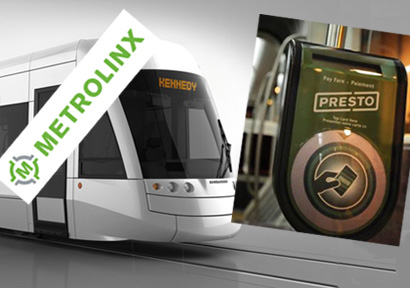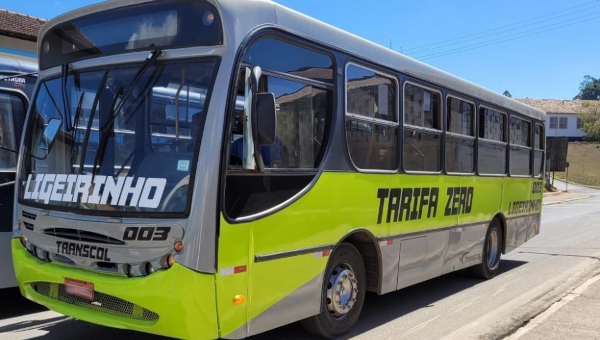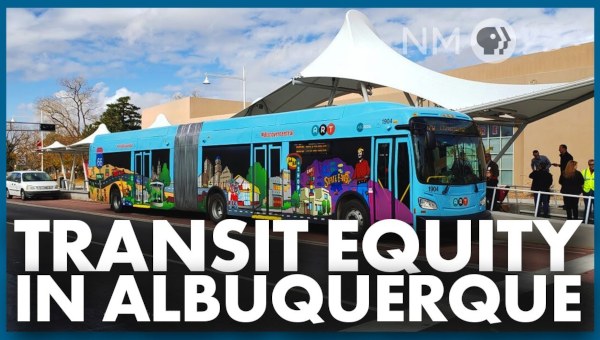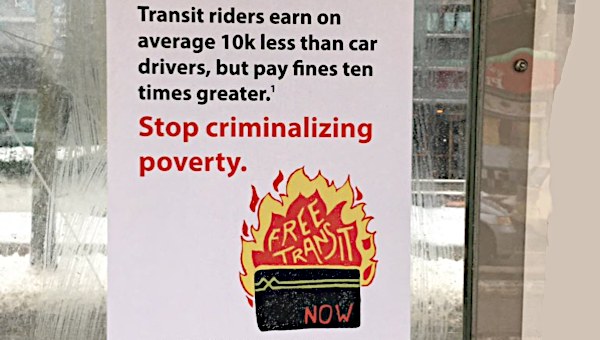Metrolinx, a Government of Ontario agency, has a mandate to “co-ordinate and integrate all modes of transportation in the Greater Toronto and Hamilton Area” (GTHA). Its blueprint for regional transportation expansion, The Big Move, was released in 2008. Initially, all debt to support transit projects in this plan was to be arranged through the Ontario Financing Authority using public procurement. However, by 2011 its investment strategy reflected changes to the Ontario Infrastructure and Lands Corporation Act that required projects over $50-million to be considered for Alternate Funding Procurement.
 In traditional public procurement, money is borrowed directly from the government at low interest rates. The appropriate government agency has responsibility for design, operation and maintenance while either undertaking the construction itself (of which there are many advantages which neoliberalism has shunted) or contracting out construction to a builder. But in the new Alternate Funding Procurement (AFP) model, a private consortium obtains financing from a private bank in order to design, build and possibly maintain and operate government infrastructure. AFP is essentially another term for public-private partnership (or P3) [Ed.: see John Loxley on P3s].
In traditional public procurement, money is borrowed directly from the government at low interest rates. The appropriate government agency has responsibility for design, operation and maintenance while either undertaking the construction itself (of which there are many advantages which neoliberalism has shunted) or contracting out construction to a builder. But in the new Alternate Funding Procurement (AFP) model, a private consortium obtains financing from a private bank in order to design, build and possibly maintain and operate government infrastructure. AFP is essentially another term for public-private partnership (or P3) [Ed.: see John Loxley on P3s].
Justifying the new model was the claim that P3s would bring projects to completion “on time and on budget” while providing “value for money” (VfM). All government agencies overseeing large infrastructure projects are now required to go through Infrastructure Ontario’s value-for-money assessment, supposedly objectively comparing traditional government procurement with a public-private partnership before deciding on the delivery model.
Biased Process
But this process is far from objective. Infrastructure Ontario (IO) was set up expressly to promote P3s. IO’s standard practice is to hire “an external advisory firm with relevant experience” to prepare the analysis. That means the private sector is evaluating whether to proceed through government or the private sector – bias is unavoidable. In value-for-money assessments of Metrolinx rail projects, a completed GO Transit project would be a logical public procurement choice for comparison. However, as described below, this practice is not always followed, leading to another potential bias favouring privatization.
Because of the higher interest costs of borrowing privately and the expectation of a 10–15 per cent profit, P3s inevitably end up costing more than government projects. Therefore, ways are found for P3s to appear to have better value.
One way is through risk assessment and transfer. When using public procurement the province is liable for all risk. But with a P3, risk is shared between the province and the private consortium, driving down the estimated cost to the public of a P3. In many cases, Infrastructure Ontario hires an outside consulting firm to develop the “risk matrix” for the project. This allows further manipulation of the results. If the risk estimate is inflated, the supposed saving by transferring the risk to private hands is equally inflated. Numerous studies have documented the economic fallacies of this process, and the assault on the most basic principle of democracy of accountable expenditures. For example, John Loxley, in his study for CUPE Asking the Right Questions: A Guide for Municipalities Considering P3s (June 2012, p. 18), commented:
“For Ontario, the assessments show, very clearly, that risk transfer alone supposedly gives P3s value for money over conventional procurement. The Credit Valley Hospital is said to deliver VfM [Value for Money] of $26-million, based on risk transfer valued at $39.7-million. Durham Regional Court House shows VfM of $49-million, while risk transfer is said to be $132-million. The Ministry of Government Services Data Centre shows VfM of $64-million and risk transfer of $150-million. How risk transfer could possibly amount to so much for such pedestrian buildings as a court house (39.5 per cent of final P3 cost) and a data centre (42.6 per cent of final P3 cost) is not explained – the public is simply expected to believe it.”
Similarly, Stuart Murray, in his report for the CCPA B.C. Office, Value for Money? Cautionary Lessons about P3s from British Columbia (June 2006, p. 1), noted that:
“The normal deliberations that go into making sound decisions about infrastructure projects are being influenced by ‘Value For Money’ assessments … that have limited use. These reports are so subjective, so susceptible to manipulation by vested interests, so complicated, and so consistently withheld from appropriate public scrutiny that they must be done by the Auditor General’s office to be of any legitimate use.”
The Ontario Provincial Auditor General
Annual Report 2012
Ontario’s Auditor General, Jim McCarter, is responsible for auditing the accounts of government agencies like Infrastructure Ontario and Metrolinx. Only the Auditor General’s office has access to fiscal data contained in the value-for-money assessments, consortia bids and change orders for P3s. A shield of corporate confidentiality prevents the public from accessing this information.
Under the existing protocol, the Auditor General’s recommendations are never released until after the decision to use a P3 has been made and the project is under way. This leaves the public powerless to intervene or have meaningful input in the decision. The Auditor General’s 2012 Annual Report does provide, however, valuable information on two P3s currently managed by Metrolinx – information that favours public procurement and more public input over transit expansion in Toronto. Two examples are the Pearson/Union Station air-rail link and the Presto fare card. They provide additional support to the conclusions reached by Loxley and Murray, and a warning to the direction that the new public transit being built is heading in.
The “Spur” Line for the Pearson-Union Air-Rail Link P3
This $128.6-million contract was awarded to a private consortium: AirLINX Transit Partners (Aecon Construction and Materials Ltd. and Dufferin Construction Company).
The initial cost estimates for the P3 model were $22-million higher than traditional government financing and procurement. The value-for-money analysis to justify private capital estimated risk for the P3 delivery to be $42-million less (with the typical fudge around risk transfer from the public to the private sector). However the higher estimate of risk for traditional delivery was not based on any completed GO Transit projects. Neither did it take into account any additional P3 costs due to changes that might be necessary during construction. A conflict of interest was also noted, as Metrolinx allowed the consulting firm that produced the P3 risk allocation matrix to bid and obtain the contract for providing engineering and technical advice on the project.
In other words, like so many P3 privatization measures, the justification rests on dubious assessments of risk, ignored assessments of public sector financing and building options, economic nonsense about government financing limits and often retro-active open-ended government guarantees of cost over-runs.
The Presto Fare System P3
The inroads to privatization and commercialization of the public transit are not just evident in the building of new transit lines. They are also found in the way the Ontario Liberal government has been maneuvering some of its other public transit support. The Presto Fare System, for example, is intended to facilitate travel by public transit anywhere within the GTHA using a reloadable plastic card for payment. In 2006, the Ontario Government awarded a ten year, $250-million contract to a U.S. consulting firm, Accenture, to design, build, operate and maintain the fare system. The process of public consultation and coordination between government agencies appeared dubious at best in the interest of privatization.
Astonishingly, when the Ontario Ministry of Transportation signed the contract, the Toronto Transit Commission (TTC) – which has 80 per cent of transit ridership within the GTHA – had not yet agreed to use the Presto system. Concern with Presto’s lack of accessibility and convenience for low-income and university students, high repair costs and a lack of back-end support for reporting transaction mistakes remained unresolved. As leverage to encourage acceptance, the Ministry suggested that the transfer of the gas tax revenue to the TTC would be contingent on it agreeing to use Presto.
Provincial guidelines stipulate that the TTC’s share of the gas tax transfer is for operations and capital expenditures.[1] According to Peter Notaro of the City of Toronto Manager’s Office for 2011-12, the amount was $162.2-million. Since 2009, approximately $91.6-million has been allocated to service, leaving transit riders on the hook for 70 per cent of the TTC’s $1.5-billion annual operating budget. With 24 per cent coming from municipal revenue and taxes, the gas tax transfer constituted a provincial contribution of just 6 per cent of the TTC’s operating budget. The province was thus threatening to withdraw its negligible subsidy to the largest transit authority in Canada, the least subsidized of any comparable jurisdiction in North America.
In 2011, the TTC negotiated a tentative agreement with another company for an open-source fare system. According to former TTC Chair Adam Giambrone, this was much more cost effective. Unlike Presto, it used existing banking technology rather than paying for the development of proprietary – and monopolistic – technology. The supplier was willing to pay the initial costs as long as it got a percentage of fare revenues. It would also make the fare collection system compatible with the existing Presto base system. But at this point the province upped the ante, threatening to withdraw not only gas-tax funding but money to pay for new streetcars and the Eglinton Crosstown LRT if the TTC didn’t adopt Presto.
So the TTC agreed to relinquish autonomy over its fare system, and recently elected mayor Rob Ford signed onto Presto. In exchange, construction of the Sheppard LRT, which had begun in December of 2009 and that Ford opposed, would stop. Provincial money would be redirected toward putting the Eglinton LRT underground (Ford’s expensive pet project that planners had concluded was unnecessary for large section of either an LRT or subway line) while the mayor sought private investors to extend the Sheppard Avenue subway. Transit City in its original form was dead, killed by Ford with provincial acquiescence.
Metrolinx paid a premium for what could be considered the unnecessary proprietary development of Presto. And, according to the Provincial Auditor, rather than modifying the original Presto system to meet the needs of Ottawa and Toronto, as permitted in the contract, the Ministry of Transportation decided to pay for a new system, Presto Next Generation (PNG). Like so much of the McGuinty Liberal government’s decision-making around P3s, transparency of the process took a backseat to the deal itself.
The Provincial Auditor estimated that the total capital expenditure for Presto and PrestoNG could be as high as $700-million, while the operating cost would be $253-million a year. Of 22 measures tracking its performance in the contract, Accenture failed to meet nearly a third. As of March 31, 2012, only 18 per cent of transit users in the GTHA used Presto. After the massive expenditures to support a private venture, public transit in the Toronto region, including the TTC, has one of the most inept electronic payment systems of any major transit system in the world. As the 2012 Annual Report of the Auditor General concluded, the “Presto base and PNG combined would turn out to be one of the more expensive fare-card systems in the world” (p. 22).
The Four New LRTs and the Downtown Relief Line
The Auditor General’s Report is suggestive of the many problems that may beset Toronto’s $8.4-billion LRT expansion projects and the projected $6.2-billion Downtown Relief Line. Metrolinx is at the helm, and it is one of the central agencies that the Liberal government has wielded its patronage and by which it coordinates its networks with the Toronto capitalist classes. More flawed value-for-money analyses favouring the private sector are likely, as well as the typical back-room deals and manipulative threats to remove funding if the City tries to act too independently from the province. Unnecessary cost overruns (fully absorbed by the public sector), with no guarantee that deadlines will be met, can also be expected. Finally, the in-house, local expertise that has supported TTC expansion for the last fifty years will be replaced by private engineering and design consultants leaving us ill equipped to choose anything but privatization in future. The urban planning disaster that has become public transit development in Toronto can be expected to continue. There is nothing that Metrolinx has ever done that makes a case otherwise.
Privatization is rooted in a neoliberal ideology that seeks to target public service workers and municipalities with austerity measures while reducing corporate taxes, bailing out banks and granting lucrative public infrastructure contracts to foreign multinationals. Once the ink has dried, international trade rules have the potential to restrict communities from acting in their own best interest. Steven Shrybman, in a report for CUPE, “Public-Private Partnerships: Assessing the Risks Associated with International Investment and Services Treaties” (2002), concluded that,
“Agreements such as NAFTA, GATS and CETA could mean that once a local government tried to terminate the P3 contract it could be considered expropriation, launching an investor-state claim through international law. Local governments would no longer be able to insist on local procurement. Environmental and health regulations could be subject to trade challenges and foreign investor claims.”
To make up for the extra P3 costs that the TTC has accepted, there will be pressure to outsource more good TTC jobs and impose fare increases on those who can least afford to pay. Other municipalities take for granted the right to their own transit policies, with senior level government financial support and public coordination. But unless there is a loud public outcry, the slow and steady evisceration of the local public transit system in Canada’s biggest city will continue – until, faced with a pile of bones, Metrolinx is ‘compelled’ to move in and take over TTC operations as well.
The Big Move is more than a regional transportation plan. In taking over LRT expansion and the Downtown Relief Line from the TTC, Metrolinx has not only restricted public scrutiny but eliminated a local level of governance and oversight that is still somewhat responsive to Toronto residents. Public consultation for The Big Move is ongoing until June 2013. Armed with the additional evidence contained in the Auditor General’s report, public transit activists must broaden the conversation about transit to include not only how we fund public transit but also how to ensure that it is delivered locally and publicly, and that the needs of the most vulnerable transit users come first. •





